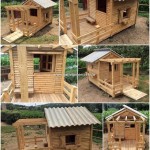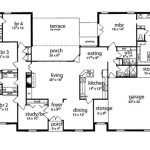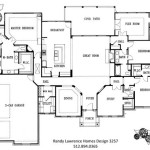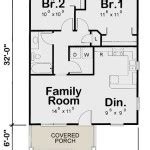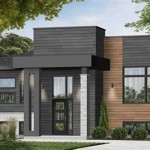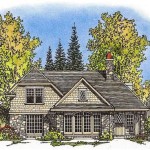A manor house floor plan refers to a detailed diagram that outlines the architectural layout and arrangement of rooms within a manor house. Manor houses were typically large, stately homes owned by wealthy landowners or nobility in medieval Europe. Floor plans served as blueprints for constructing and renovating these residences, providing a comprehensive visual representation of the building’s interior.
The floor plan of a manor house would typically include various rooms, each with a specific function. Common features included a great hall, where guests and retainers would gather; a solar, the private living quarters for the lord and lady; a chapel, for religious services; a kitchen, for preparing meals; and multiple bedrooms and chambers for the occupants. These plans not only ensured efficient use of space but also reflected the social and hierarchical structure of the household.
Understanding manor house floor plans is not only valuable for historical research but also contributes to the study of architecture, archaeology, and the daily life of medieval nobility. By examining these floor plans, scholars can gain insights into the social and cultural dynamics of feudal society and the evolution of building techniques over time.
Key Points About Manor House Floor Plans:
- Reflects social hierarchy
- Outlines room functions
- Illustrates architectural layout
- Provides construction blueprints
- Shows spatial relationships
- Depicts circulation patterns
- Highlights communal spaces
- Indicates private chambers
- Reveals building techniques
- Informs historical research
Manor house floor plans offer valuable insights into the design, construction, and daily life of medieval elite households.
Reflects social hierarchy
Manor house floor plans vividly reflect the social hierarchy prevalent in medieval society. The arrangement and size of rooms, as well as their proximity to communal spaces, indicate the relative status and importance of the occupants.
- Great Hall: The great hall was the central gathering space for the household, where the lord and lady would receive guests, hold feasts, and conduct business. Its size and grandeur symbolized the power and prestige of the family.
- Solar: The solar was the private living quarters for the lord and lady. It was typically located near the great hall but set apart from the hustle and bustle of the household. The solar’s furnishings and decorations reflected the wealth and status of its occupants.
- Chapel: The chapel was a sacred space reserved for religious services. Its location within the manor house indicated the importance of religion in medieval life. The size and ornamentation of the chapel also reflected the piety and social standing of the family.
- Bedrooms and Chambers: The size and location of bedrooms and chambers within a manor house indicated the occupants’ status. The lord and lady would have the largest and most comfortable chambers, while servants and retainers would occupy smaller and more modest rooms.
By examining the floor plan of a manor house, historians can gain insights into the social structure and daily life of medieval households.
Outlines room functions
Manor house floor plans provide a detailed outline of the various rooms within the house and their specific functions. Each room served a distinct purpose, reflecting the needs and social structure of the medieval household.
- Great Hall: The great hall was the central gathering space for the household, where the lord and lady would receive guests, hold feasts, and conduct business. It was typically the largest and most impressive room in the manor house, often featuring a high ceiling, large windows, and an ornate fireplace. The great hall served as a multi-purpose space, used for dining, entertainment, and even sleeping arrangements for guests and retainers.
- Solar: The solar was the private living quarters for the lord and lady. It was typically located near the great hall but set apart from the hustle and bustle of the household. The solar would typically consist of a bedroom, a sitting room, and a wardrobe or dressing room. It was a place of privacy and comfort for the lord and lady, where they could retreat from the demands of daily life.
- Chapel: The chapel was a sacred space reserved for religious services. It was typically located within the manor house, indicating the importance of religion in medieval life. The size and ornamentation of the chapel varied depending on the wealth and piety of the family. Some manor houses had elaborate chapels with stained glass windows, intricate carvings, and a dedicated altar, while others had smaller, more modest chapels.
- Kitchen: The kitchen was the heart of the manor house, where meals were prepared for the household. It was typically located in a separate building or wing of the house to prevent the spread of smoke and fire. The kitchen would be equipped with a large hearth for cooking, as well as various utensils, pots, and pans. It was a busy and noisy place, with servants and cooks working diligently to provide food for the household.
By examining the floor plan of a manor house and understanding the functions of each room, historians can gain insights into the daily life and social customs of medieval households.
Illustrates architectural layout
Manor house floor plans provide a detailed illustration of the architectural layout of the building. They show the arrangement and size of rooms, as well as their relationship to each other and to the exterior of the house. This information can be used to understand the overall design of the manor house, as well as the way it was used by its occupants.
One of the most important aspects of a manor house floor plan is the way it reflects the social hierarchy of the household. The great hall, the largest and most impressive room in the house, was typically used for entertaining guests and holding feasts. The solar, the private living quarters of the lord and lady, was usually located near the great hall but set apart from the hustle and bustle of the household. The bedrooms and chambers of the other members of the household were typically located in the upper stories of the manor house, with the servants’ quarters located in the basement or attic.
In addition to the social hierarchy, manor house floor plans also reflect the functional needs of the household. The kitchen, pantry, and buttery were typically located near the great hall to facilitate the serving of meals. The chapel was typically located in a quiet corner of the house to provide a space for religious services. The stables, barns, and other outbuildings were typically located outside the main house to keep the noise and smell of animals away from the living quarters.
By examining the architectural layout of a manor house floor plan, historians can gain insights into the social structure, daily life, and economic activities of medieval households.
Provides construction blueprints
Manor house floor plans served as detailed construction blueprints, guiding the builders in the actual construction or renovation of the manor house. These plans provided precise instructions on the dimensions, layout, and architectural features of each room, ensuring that the final structure aligned with the architect’s vision and the needs of the household.
The floor plans specified the size and shape of each room, as well as the location of doors, windows, fireplaces, and other architectural elements. They also indicated the materials to be used in the construction, such as stone, wood, or plaster. By following these plans, the builders could ensure that the manor house was structurally sound and met the specific requirements of its occupants.
In addition to providing construction guidance, floor plans also served as a valuable record of the manor house’s design and layout. If the manor house was damaged or destroyed, the floor plan could be used to guide its reconstruction, ensuring that the new structure remained faithful to the original design.
Shows spatial relationships
Manor house floor plans provide valuable insights into the spatial relationships between different rooms and areas within the house. By examining the floor plan, we can understand how the occupants moved through the space and how the different rooms were connected.
- Proximity and accessibility: The floor plan shows the proximity of different rooms to each other, indicating how easy or difficult it was for occupants to move between them. For example, the great hall was typically located near the entrance of the manor house, making it easily accessible to guests and household members alike.
- Traffic flow: The floor plan can also reveal the likely traffic flow within the manor house. Wider corridors and staircases suggest areas of high traffic, such as the main entrance or the great hall. Narrower passages and smaller doorways, on the other hand, indicate less frequently used areas.
- Functional relationships: The floor plan can also shed light on the functional relationships between different rooms. For example, the proximity of the kitchen to the great hall suggests that meals were likely served directly from the kitchen to the dining area.
- Privacy and seclusion: The floor plan can also reveal the levels of privacy and seclusion afforded to different occupants. The lord and lady’s solar, for instance, was typically located in a secluded part of the house, away from the hustle and bustle of the main living areas.
By understanding the spatial relationships between different rooms and areas within a manor house, historians can gain insights into the daily life and social interactions of medieval households.
Depicts circulation patterns
Manor house floor plans provide valuable insights into the circulation patterns within the house, indicating how people moved through the space on a daily basis.
- Main circulation routes: The floor plan shows the main circulation routes within the manor house, such as the main entrance, staircases, and corridors. These routes were designed to facilitate the movement of people and goods throughout the house.
- Secondary circulation routes: In addition to the main circulation routes, the floor plan may also show secondary circulation routes, such as narrow passages, doorways, and service stairs. These routes were typically used by servants and other household members to access different parts of the house without disturbing the main flow of traffic.
- Private circulation: The floor plan can also reveal the circulation patterns of private individuals, such as the lord and lady of the manor. Their private chambers were often connected bypassageways and staircases, allowing for discreet movement within the house.
- Public circulation: The floor plan can also show the circulation patterns of public spaces, such as the great hall and the chapel. These spaces were designed to accommodate large gatherings of people and facilitate social interaction.
By understanding the circulation patterns within a manor house, historians can gain insights into the daily routines and social interactions of medieval households.
Highlights communal spaces
Manor house floor plans often highlight communal spaces, which were central to the social and domestic life of medieval households. These spaces provided areas for gathering, entertainment, and communal activities.
- Great Hall: The great hall was the main communal space in a manor house. It was used for dining, entertaining guests, and holding social events. The great hall was typically the largest and most impressive room in the house, with a high ceiling, large windows, and an ornate fireplace. It was a place where the lord and lady would receive guests, hold feasts, and conduct business.
- Solar: The solar was a private suite of rooms used by the lord and lady of the manor. It typically consisted of a bedroom, a sitting room, and a wardrobe or dressing room. The solar was often located near the great hall but set apart from the hustle and bustle of the household. It was a place where the lord and lady could retreat for privacy and relaxation.
- Chapel: The chapel was a sacred space reserved for religious services. It was typically located within the manor house, indicating the importance of religion in medieval life. The size and ornamentation of the chapel varied depending on the wealth and piety of the family. Some manor houses had elaborate chapels with stained glass windows, intricate carvings, and a dedicated altar, while others had smaller, more modest chapels.
- Kitchen: The kitchen was the heart of the manor house, where meals were prepared for the household. It was typically located in a separate building or wing of the house to prevent the spread of smoke and fire. The kitchen would be equipped with a large hearth for cooking, as well as various utensils, pots, and pans. It was a busy and noisy place, with servants and cooks working diligently to provide food for the household.
By highlighting communal spaces in their floor plans, manor house architects created spaces that fostered a sense of community and togetherness among the household members.
Indicates private chambers
Manor house floor plans also indicate the location of private chambers, which were reserved for the lord and lady of the manor, as well as their close family members and trusted guests.
The lord and lady’s private chambers were typically located in a secluded part of the house, away from the hustle and bustle of the main living areas. These chambers would often consist of a bedroom, a sitting room, a wardrobe or dressing room, and sometimes a privy or garderobe. The furnishings and decorations of these chambers would reflect the wealth and status of the occupants.
Other private chambers in the manor house might be reserved for the lord and lady’s children, close relatives, or trusted guests. These chambers would typically be smaller and less elaborate than the lord and lady’s private chambers, but they would still provide a degree of privacy and comfort for their occupants.
The location and size of private chambers within a manor house can provide valuable insights into the social structure and daily life of medieval households. By examining the floor plan of a manor house, historians can gain a better understanding of the private lives of the lord and lady and their relationship with the rest of the household.
Reveals building techniques
Manor house floor plans can reveal valuable information about the building techniques used in the construction of the house. By examining the floor plan, historians and architects can gain insights into the materials used, the structural system employed, and the overall design and craftsmanship of the manor house.
- Materials used: The floor plan can indicate the types of materials used in the construction of the manor house, such as stone, wood, brick, or plaster. The choice of materials would depend on the availability of local resources, the wealth of the owner, and the desired architectural style.
- Structural system: The floor plan can also reveal the structural system used in the construction of the manor house. Common structural systems used in medieval manor houses include post-and-beam framing, cruck framing, and masonry vaulting. The choice of structural system would depend on the size and complexity of the building, as well as the availability of skilled labor.
- Design and craftsmanship: The floor plan can provide insights into the design and craftsmanship of the manor house. The overall layout of the rooms, the size and shape of the windows and doors, and the presence of decorative features such as fireplaces and moldings can all indicate the skill and artistry of the builders.
- Evolution of building techniques: By comparing the floor plans of different manor houses built over time, historians can trace the evolution of building techniques and architectural styles. This information can help us understand how manor houses changed in response to changing social, economic, and technological factors.
Overall, manor house floor plans are a valuable source of information about the building techniques used in the construction of these medieval dwellings. By examining these floor plans, historians and architects can gain insights into the materials, structural systems, design, craftsmanship, and evolution of manor houses.
Informs historical research
Manor house floor plans provide a wealth of information that can inform historical research in a variety of ways.
First, floor plans can provide insights into the social structure and daily life of medieval households. The size and location of rooms, as well as the presence of specific features such as fireplaces, garderobes, and private chambers, can all shed light on the social hierarchy and daily routines of the people who lived in the manor house.
Second, floor plans can provide information about the architectural history of a manor house. By examining the floor plan, historians can identify different phases of construction and renovation, as well as changes in the use of space over time. This information can help to reconstruct the history of the manor house and its occupants.
Third, floor plans can provide insights into the economic status of the household. The size and complexity of a manor house, as well as the presence of certain features such as a great hall, a chapel, or a dovecote, can all indicate the wealth and status of the family who lived there.
Finally, floor plans can provide information about the cultural and artistic tastes of the occupants. The presence of decorative features such as fireplaces, moldings, and stained glass windows can all indicate the cultural and artistic interests of the people who lived in the manor house.
Overall, manor house floor plans are a valuable source of information for historical research. By examining these floor plans, historians can gain insights into the social structure, daily life, architectural history, economic status, and cultural tastes of medieval households.










Related Posts


